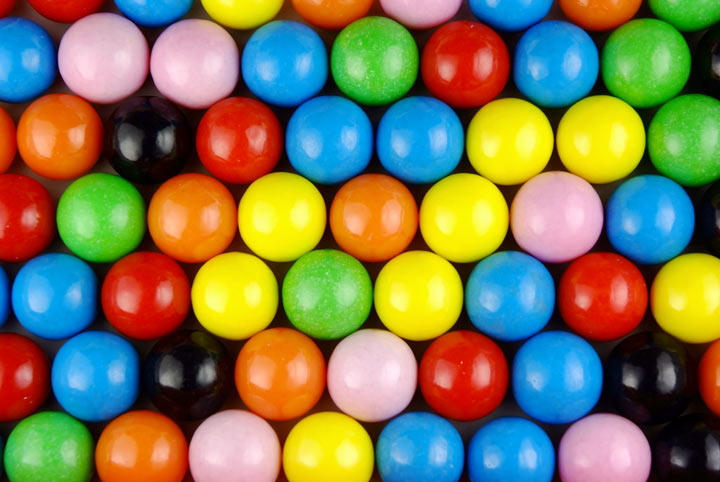You’re probably familiar with the term ‘gobstopper’ from Roald Dahl’s classic children’s novel Charlie and the Chocolate Factory, but you may be surprised to know that this sweet treat was around far before the book was ever written. Known as ‘gobstopper’ in the UK and a ‘jawbreaker’ in the U.S, these globe-shaped pieces of candy comes in all sizes – from as small as a pea to the size of a golf ball.
You may be wondering how this sweet has become one of the most iconic of our generation? Maybe it’s the excitement of eating something potentially hazardous, or perhaps it’s the bursting flavours of each layer and the surprise gum at the centre.
Without further ado, let’s take a brief look at the history of the gobstopper/jawbreaker.
The origins of the jawbreaker began in ancient Egypt, where sweets were created using natural ingredients such as the likes of fruits, nuts and seasonings, since sugar was sparse and extremely expensive. In India, sugar was being naturally introduced into dishes by deriving syrup from sugarcane.
Due to the rarity of sugar, it was very never used as a treat, but instead, was most commonly used for medicinal purposes. However, by the 1500s, manufacturing of sweets had begun on a small scale with all produce created by hand, however, 200 years later, machinery was being used in larger-scale confectionary companies to create more interesting and unique sweets, such as the jawbreaker.
Interestingly, sweets are created using different methods to achieve the correct substance and consistency. When sugar is boiled on low heat, it tends to have a rubbery centre, while a much higher temperature causes the substance to harden and crystallize, which is ultimately, how the jawbreaker is formed.
The jawbreaker became a popular sweet around the world when it was introduced by Ferrara Pan Candy Company of Forest Park, Illinois. Despite adopting the famous candy as their invention and naming it the ‘jawbreaker’, there is no evidence to suggest where the name originally derived from. In 1839, the word jawbreaker was instituted into the English language with no real meaning and deemed to be a ‘hard to pronounce’ word.
Italian-born Ferrara Pan moved to the States in 1908 and created this revolutionary’ sweet using almonds coated in sugar, before starting the firm in 1919. Using the ‘jawbreaker’ name, the original concept of the word was soon forgotten and instead, became associated with this new, popular form of candy.
Although Ferrara Pan remains the most popular manufacturer of jawbreakers to this day, many companies around the world create their very own versions of the sweet.
In 1971, the famous ‘everlasting gobstopper’ caught the attention of young kids in Charlie and the Chocolate Factory was released, starring Gene Wilder. In the same year, Breaker Confections, based in Chicago got certification of the name of the sweet from the film, in order to sell their own version of the fantasy sweet on the market. In 1976, every child’s dream of trying an ‘Everlasting Gobstopper’ came true when Breaker Confections released the product after five years. While it may have lasted a long time, it, unfortunately didn’t last forever (as the film suggested!)
Since then, the gobstopper/jawbreaker has remained a firm favourite with kids everywhere and is still just as popular to this day. You can purchase your very own pack of Gobstoppers from our website in a bulk order from us!

